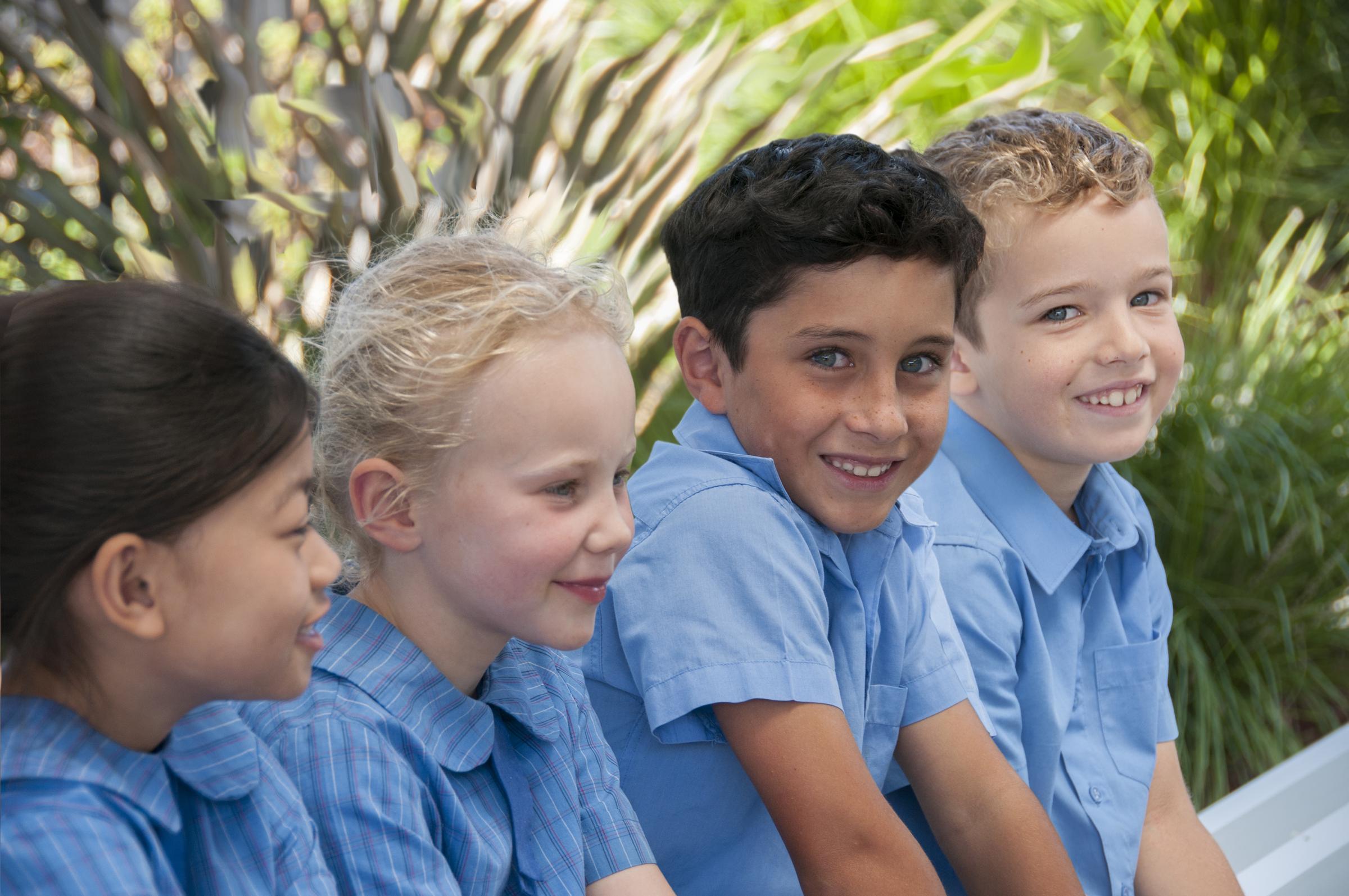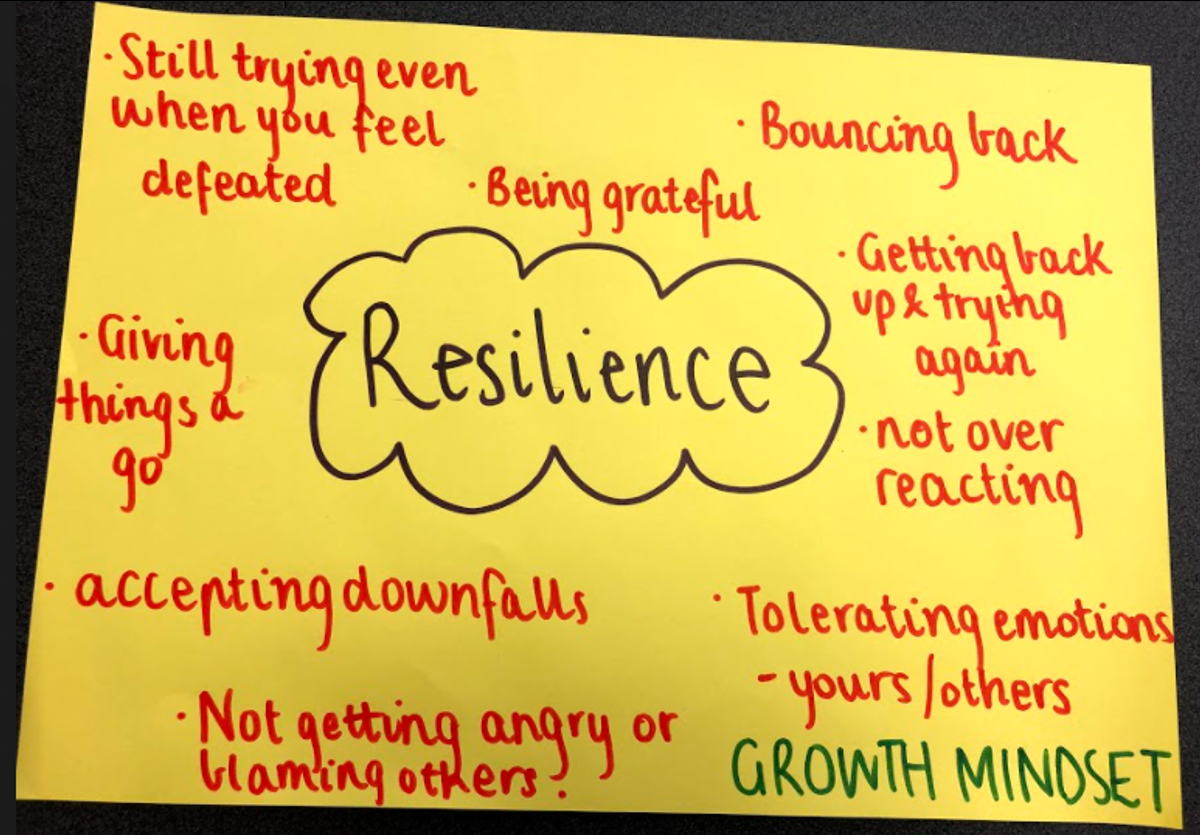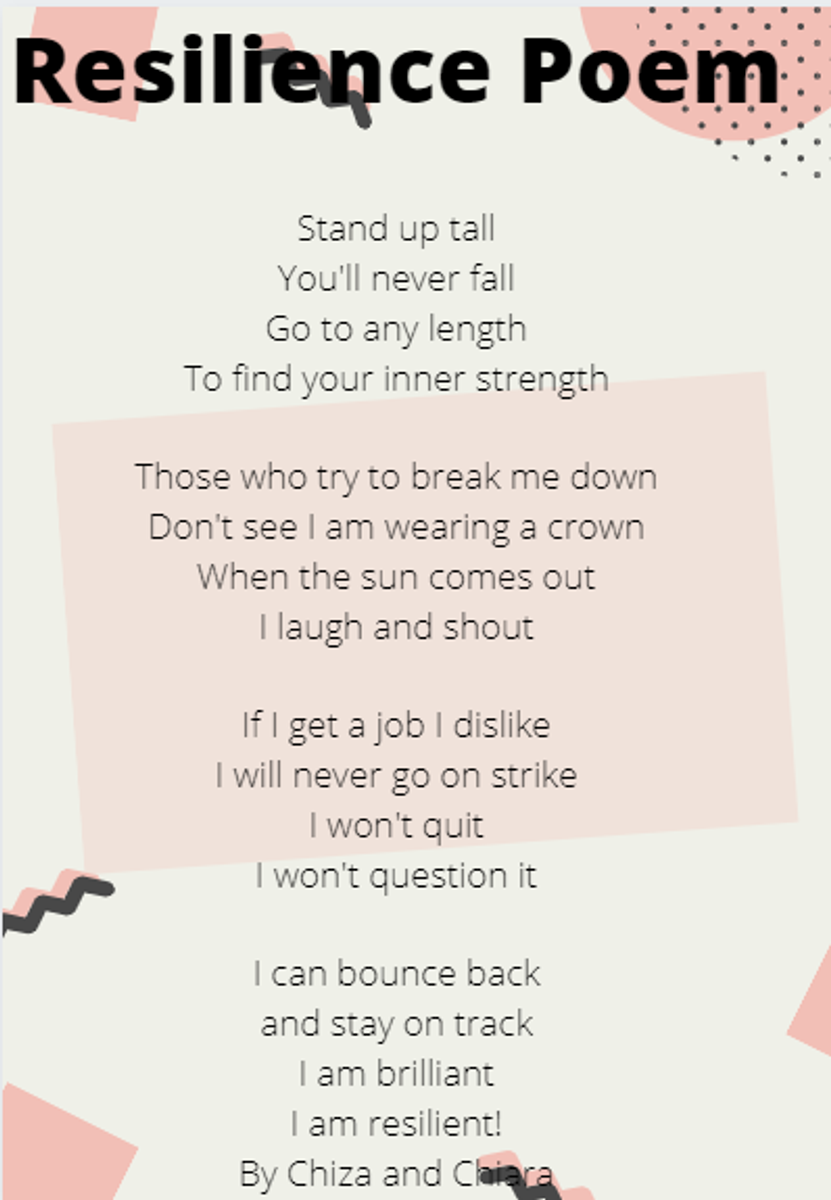Student Well-being

Community Spotlight: Year 5/6 Community
Focus: Resilience
This term, students in the Year 5/6 Community have looked at resilience. Each session starts off with a "Be Here Now" meditation. This offers students an opportunity to be present and check in for the day. As students are beginning to discover, resilience is influenced by a range of biological, social and psychological processes. In pairs, students brainstormed what resilience means to them.
The community also looked at External Factors vs Internal Factors that contribute to positive coping strategies to build resilience.
| EXTERNAL FACTORS | INTERNAL FACTORS |
|
|
In small groups, students came up with scenarios and explored different responses to the same scenario, looking more closely at high resilience vs low resilience, here are some of their responses:
High Resilience | Scenario | Low Resilience |
| Being a good sport, encouraging your team mates | Playing a game and your team loses | Having a tantrum, blaming people in your team for losing. |
| Just accepting it, praising the other players | When you get tagged in the game tag | Blaming others, accusing others of cheating. |
| Just deal with it, respond politely | Your mum doesn’t let you go to your friend's house | Let your emotions take over, lose control and be angry |
| Being honest and owning up that it was a bad idea | Breaking something when you're not being sensible. | Blame the other people you were playing with. |
| Don’t let your emotions overwhelm you | You hurt yourself | Swear and scream, yell at someone about it. Lashing out |
Students then had the fun task of exploring resilient messages through pop songs and the metaphoric language used. These songs included: Titanium, Stronger, Skyscraper and Hall of Fame. To demonstrate their understanding of positive resilience students created their own songs/poems about resilience, “10 tips for living a resilient and meaningful life” guidelines, or a resilience “do’s and don’ts” fact sheet. Students were thoroughly engaged in the rap battle against the teachers! See some examples below:
Resilience Rap
Miss Dullard, Miss Poropat, Mrs Cuni
Resilience, it's a word we all know!
But Miss D’s here to tell you fo’ sho’
I know it’s hard when you're growing up,
So if your homies feeling down, ask them waz up!
Remember it's not so hard being tough,
Just know you'll get through it, that's enough!
Yeah, it's Miss P on the decks,
Don’t believe me? Put on your specks!
It's all about bouncing back,
You need to get yo’ selves on track
The old me would have wept,
Now all I do is accept!
Letting your emotions take over,
Unfortunately, you’ll never get a 4 leaf clover
Some days it’s hard,
The haters get you down
It’s how we get back up
That can turn our world around
The drama of the day, that creeps into the night
Ensures our health's okay and keeps us in the fight
Rap - Ayrton Galliano
Stub your toe,
Lose in a game,
Don’t shout “No”
Or use the Lord’s name in vain,
What do we do?
Be resilient!
Be cool, and quiet too,
Don’t stomp your feet like an elephant.
Be resilient!
That’s what we do!
Don’t say you can’t because you can!
Everyone likes resilient people,
Because they are nice and bounce back
No one likes bad people
Bad people are like lice.
I will never give in.
I will never give up! (repeat)
Anxiety requires understanding
The recent rise in childhood and adolescent anxiety and its acceleration during COVID-19 has worried parents and teachers. Many ask how they can assist kids when they become anxious about seemingly routine events such as attending school camps and excursions, tackling difficult subjects, or facing the prolonged absence of a favourite teacher.
Typical responses such as ignoring their worries or encouraging them to ‘get on with it’ are unhelpful. Allowing a child to avoid an activity that makes them anxious is another unhelpful option. Avoidance may help kids feel safe in the short term, but it risks the establishment of a long-term pattern that can be impossible to shift.
Regardless of the source every child and young person needs an adult in their life that understands them when they are anxious. It may make little sense that an activity makes a child anxious, you just need to understand that they are anxious. They need someone to witness their anxiety without dismissing or ignoring their feelings.
Anxious kids frequently look to parents and teachers for reassurance when they feel anxious. This shows in many ways, including kids continually seeking the opinion of others, wanting parents or teachers to make decisions for them, and continually asking for praise. Adults don’t have to fix kids’ problems, but we do have to understand they are anxious.
The use of ‘Ahhhh’ statements to validate how an anxious child is feeling, is a practical way to show that you are trying to understand them. It’s also a great way to help a child develop a more nuanced emotional vocabulary. Here are some examples:
‘Ahhhh, you’re feeling anxious about going to school camp . . .’‘Ahhhh, you’re having one of those “I might mess it up” thoughts . . .’
Each child’s anxiety is unique. The first and most important response from an adult is to show a child that you ‘get’ that they are anxious. Having someone understand that they are anxious is an enormous relief, particularly if they haven’t been taken seriously in the past. Sitting alongside a child who feels anxious is an underestimated act of compassion that makes a huge difference to their immediate emotional state.
Lauren Borg
Student Wellbeing Leader



